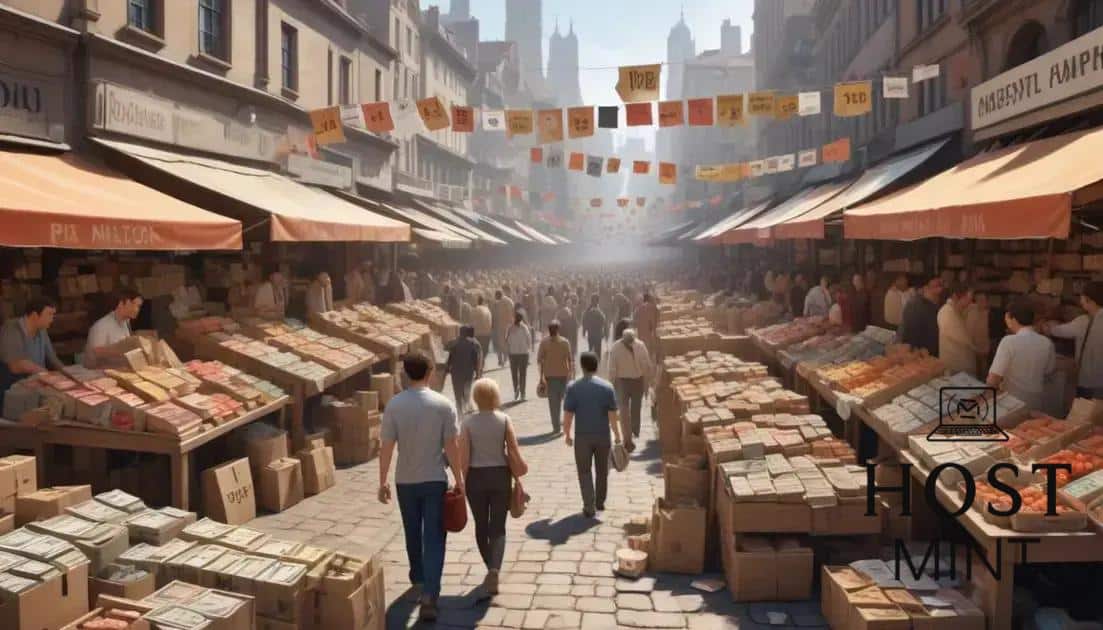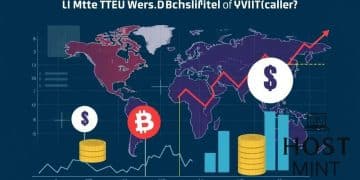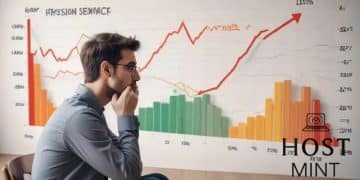Tariff-driven inflation debate: Understanding the impact

Tariff-driven inflation happens when tariffs increase the cost of goods and services. This directly affects consumer budgets and everyday spending habits.
As prices rise, households may feel the pinch on essential purchases. Economic stability can be challenged when tariffs persist over time.
The debate around tariff-driven inflation is more relevant than ever. Consumers and policymakers alike are considering its broader effects.
Understanding tariff-driven inflation
Understanding tariff-driven inflation is key in today’s economy. Tariffs can push up costs, impacting both businesses and consumers.
These measures affect the price of imported goods, which can ripple through the market. Knowing the dynamics helps people plan their spending better.
By examining how tariffs function, we can see their widespread impact. This knowledge clarifies why this topic attracts so much debate.
What Are Tariffs?
Tariffs are taxes applied to imports by governments. They aim to protect local industries from foreign competition.
However, tariffs often increase prices for consumers. Higher import costs lead businesses to adjust their pricing strategies.
When tariffs are in effect, everyday items can become more expensive. This is why consumers often feel the immediate effects of such policies.
The Cycle of Inflation
Tariffs can create a self-reinforcing cycle of inflation. Rising prices reduce the purchasing power of currency for households.
As spending slows, economic growth can be affected. This makes tariff-driven inflation a significant concern for policymakers.
Historical examples, like the Smoot-Hawley Tariff in the 1930s, show the consequences. Learning from the past helps us understand present challenges.
Historical context and examples

Exploring historical context highlights the roots of tariff-driven inflation. Tariffs have long been tools for economic control.
Their impact depends on political and economic conditions. Different eras illustrate how tariffs influenced prices and trade.
Studying past events helps assess how current policies might unfold. Awareness of history is key to understanding today’s debates.
The Great Depression Era
During the Great Depression, the Smoot-Hawley Tariff was enacted in 1930. The goal was to protect American jobs, but results were mixed.
Retaliatory tariffs from other countries increased prices globally. Consumers and international trade suffered significant setbacks.
This domino effect illustrates how quickly tariffs can escalate into widespread economic disruption. Lessons from this period remain relevant today.
Modern Examples
Recent tariffs on Chinese goods show similar patterns. Prices increased in multiple sectors, impacting consumers directly.
Although intended to protect domestic manufacturers, these tariffs often strain household budgets. The debate continues over their effectiveness.
Consumers notice rising costs on everyday items. Understanding these modern examples helps illustrate the ongoing challenges of tariffs.
Economic theories related to tariffs
Economic theories help explain tariffs’ effects on the economy. They provide insights into both benefits and drawbacks.
Protectionism suggests tariffs protect domestic industries from foreign competition. This can preserve jobs but raise prices.
Comparative advantage theory argues that countries should specialize in what they produce most efficiently. Tariffs disrupt this, affecting global trade patterns.
Protectionism
Protectionism aims to shield local industries from external competition. This can support employment and stimulate domestic production.
However, protectionism can also lead to higher consumer prices. It reduces market choices and may foster inefficiencies in industries.
Understanding these trade-offs is crucial. Policymakers and consumers can better evaluate tariff policies with this perspective.
Comparative Advantage
Comparative advantage promotes efficient specialization in global trade. Tariffs interfere with this natural process.
When countries produce less efficiently, global economic benefits are reduced. Trade wars can escalate if nations retaliate with their own tariffs.
This highlights the broader consequences of tariffs. Consumers and markets experience both direct and indirect effects on prices and availability.
Impact on consumers and businesses
Tariffs have significant effects on consumers and businesses alike. Prices, choices, and market dynamics all shift as a result.
Consumers face higher prices for imported goods. Retailers often pass increased costs on, affecting household budgets.
Businesses encounter rising input costs. Some may seek alternative sourcing, disrupting supply chains and labor arrangements.
Higher Prices for Consumers
Immediate impacts include increased prices for daily goods. Tariffs on raw materials like steel affect finished products.
Households may need to adjust spending habits. Rising costs influence budgets and discretionary spending.
This also has psychological effects. Consumer sentiment and purchasing behavior can shift under tariff pressure.
Challenges for Businesses
Companies face squeezed profit margins from higher input costs. Pricing strategies may need adjustments to stay competitive.
Supply chains may be rerouted to avoid tariffs. These changes can affect production timelines and labor forces.
Businesses must adapt strategically. Understanding these challenges is essential for navigating a tariff-affected economy.
Policy responses and future outlook

Governments employ various measures to manage tariff impacts. Balancing economic growth with price stability is the goal.
Adjusting tariffs can help mitigate costs. Reducing duties on essential imports can ease consumer financial pressure.
Tax relief and subsidies also play a role. These measures support both consumers and affected businesses, stabilizing the economy.
Adjusting Tariffs
Policymakers may lower tariffs on necessities. This helps households maintain purchasing power.
Alternatively, tariffs on non-essential items can raise revenue but risk higher prices. Trade-offs must be carefully considered.
Negotiating trade agreements is another tool. Agreements can reduce or remove tariffs, benefiting both domestic and international stakeholders.
Long-Term Strategies
Investing in innovation boosts competitiveness of domestic industries. Efficient production reduces reliance on imports and mitigates inflation.
Exploring new markets diversifies trade partners. This reduces vulnerability to tariffs and global economic shifts.
Flexible and forward-looking policies are crucial. They help economies maintain resilience amid changing international relations.
FAQ – Frequently Asked Questions about Tariff-Driven Inflation
What is tariff-driven inflation?
Tariff-driven inflation refers to the rise in prices of goods and services caused by the imposition of tariffs on imports, leading to increased costs for consumers.
How do tariffs impact consumers?
Tariffs can lead to higher prices for imported goods, which means consumers may have to pay more for everyday items, straining their budgets.
What are the potential benefits of tariffs for businesses?
Tariffs can protect domestic industries from foreign competition, potentially preserving jobs and encouraging local production.
What strategies can governments use to address tariff impacts?
Governments may adjust tariffs, provide subsidies to affected industries, or implement tax relief measures to help mitigate the effects of tariffs on consumers and businesses.






